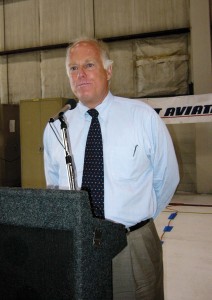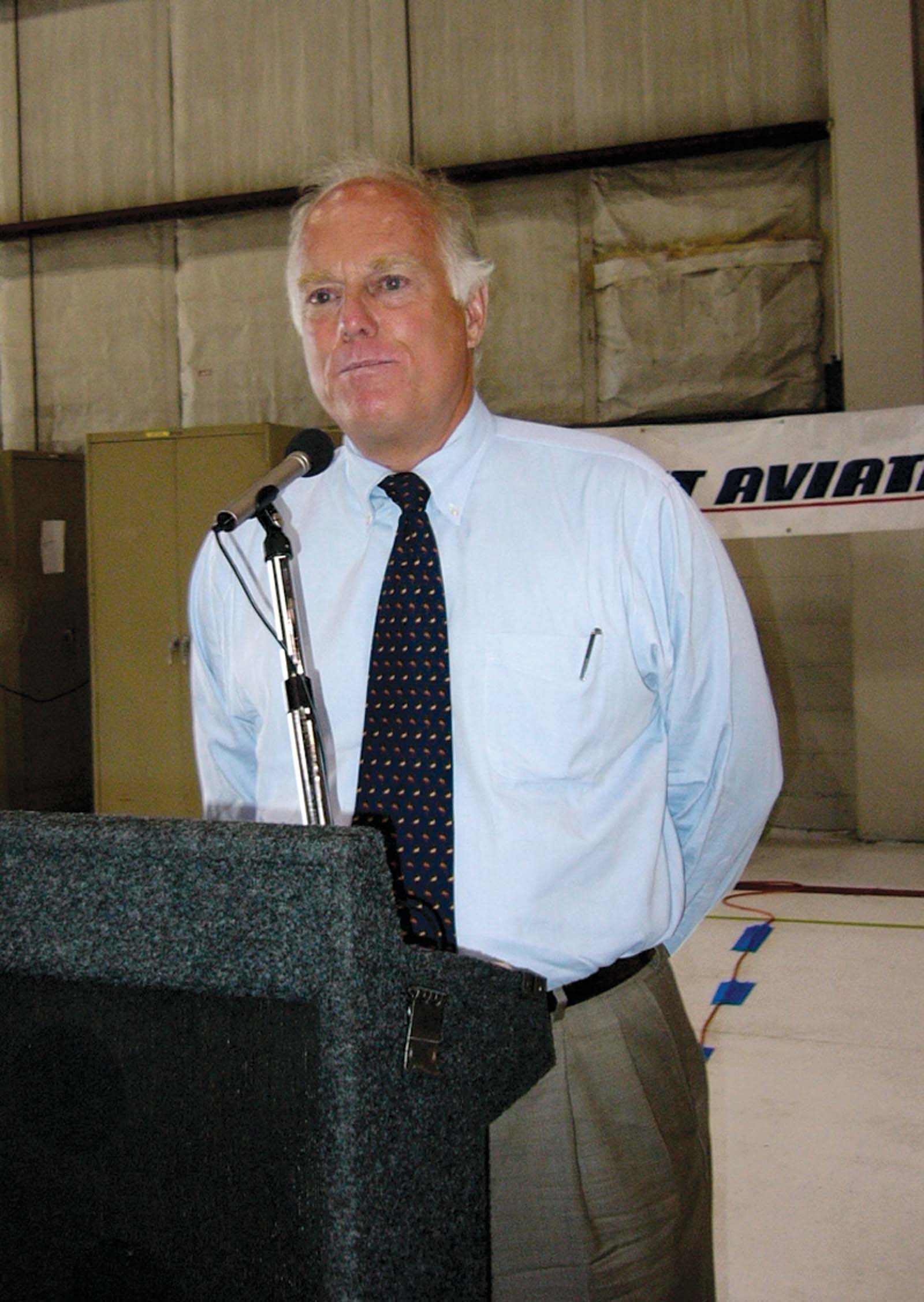By Jack Elliott

Speaking at a town hall meeting at Teterboro Airport, Jim Coyne, president of the National Air Transportation Association, announced a new air charter Safety Management System program.
Speaking at a town hall meeting at Teterboro Airport on July 11, Jim Coyne, president of the National Air Transportation Association, announced a new air charter Safety Management System program. He said the SMS has the goal of cutting the accident rate of these operations by 50 percent or more within five years. A major objective of the program, aside from improving the safety of charter operations, is to change the public perception of “small” jet flights.
“The airlines have achieved a public perception of airline safety,” he said. “If you went out on the street today and got a hundred random people at a corner and asked them, ‘Are you comfortable getting on an airliner from a safety angle?’ my guess is that 97 or 98 percent would say ‘Yes.’ But if you went out on the same street corner and asked, ‘Would you be comfortable getting on a small eight-passenger jet?’ my guess is that 30 or 40 percent would say ‘No. I’d be nervous doing that.’
“Because of the anxiety level, we have a whole set of regulatory and political hurdles that we have to meet. Our goal at NATA is to take on the safety issue, and emulating what the airlines have done, to duplicate their success over 30 years in getting their accident rate down to almost imperceptible levels and building public confidence about jet travel.”
Coyne set this goal in spite of the fact that “we’re not playing on a level playing field.”
“When you look at the record, they have it relatively easy,” he said. “They operate over fixed routes and from our most sophisticated airports, and they have well-trained crews. We, on the charter aviation side, have a much tougher job. We operate into airports with much lower margins of safety. Often, people come to us because the airlines aren’t flying because of weather or other factors.”
Coyne said there’s no reason why the charter industry can’t achieve the same level of safety we’ve seen the airlines move toward in the last 20 or 30 years.
“I’m not saying we’re going to do it overnight,” he said. “But I truly believe that if we start today, in the next five years we can reduce the charter accident rate by 50 percent or more. And I believe that in the next 10 years we can get the charter rate down to virtually the same as we see in the airline industry today.”
Coyne said the industry’s poised for a period of unprecedented growth.
“But there are a couple of big challenges to that growth,” he said. “One is the challenge of the public perception of safety in small airplanes. In the past nine months, we’ve seen high-profile media attention given to aircraft accidents. The ironic thing is if you look at hard data released this week in the Breiling Report, about accident activity in our industry, it indicates steady improvements with less and less accidents and less fatalities. I submit that there will not be coverage of this report in one single general audience newspaper. However, relatively minor jet aircraft incidents will routinely appear on the front pages of USA Today and many other national magazines and newspapers.”
He said he has no doubt that we can double or triple the size of our industry in the next 10 years in terms of resources, investment and manpower.
“The biggest thing standing between us and that future is public perception of safety,” he said. “It affects people who have political power. That’s why I’m here today to announce the expansion of NATA’s ‘Safety 1st’ program to a whole new level.”
Coyne described five steps in NATA’s Safety Management System program, which is part of the Safety 1st initiative. First, he said senior management must buy into the program. Then, a training program must be established; there must be a manual to follow the system.
“Also, we need to collect data about losses,” he said. “We have developed partnerships with each insurance company in America that collects data about every claim they receive from charter operators to help us analyze accidents and risks.”
As well, an online Internet base must be in place where charter pilots will be able to access data.
“We have to fight pilots’ excess of self-confidence,” Coyne said. “We need an online corporate training program.”
Finally, NATA and Simat Helliesen & Eichner, Inc., an international aviation consultant firm with which NATA is working, will provide a regular audit structure to build a cadre of safety audits.
“Leading charter operators have already endorsed the system and are full partners,” Coyne said. “Within six months we hope to have 200 charter members in the program, and within 18 months we hope to have 1,000. Safety is what we should be focused on.”
The cost for joining the program is based on the number of flight crews. For companies with under 20 crews, that cost is $600. Companies with 20 to 99 crews are assessed $1,200, and the cost for companies with 100 or more crews will be $1,800.
“Why did I come to Teterboro to announce this program?” Coyne asked rhetorically. “Because it’s the most important charter airport in the country. Also, because it’s had some accidents. Teterboro is part of a national system. The FAA isn’t going to allow a single accident or an incident at an airport to be used by political opponents of the airport as an excuse for reducing the efficiency and effectiveness of that airport and the ability to serve its customers.
“As an association, NATA is pleased to be up here supporting the efforts of the FAA and our federal government to continue to make sure that this airport is a crown jewel of our national air transportation system.”
The program has an impressive list of underwriters, including Air BP, Assurance, Chevron Texaco, ExxonMobil, Global Aerospace, Phillips 66 Aviation, Phoenix Aviation Managers, Inc., USAIG, XL Insurance and W. Brown Associates. In time, the Safety Management System could result in fewer claims for insurance companies and eventually, lower insurance rates for operators.
Also see NATA/SH&E Charter SMS Audit Partnership Raises Questions on page 20-B.











